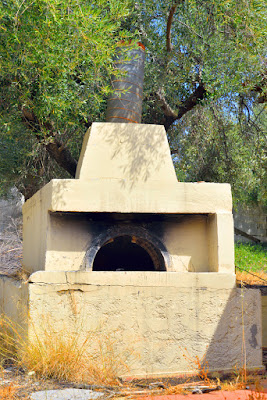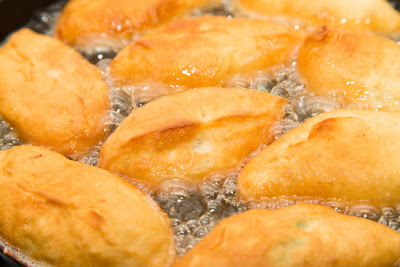The Importance of Cleaning Your Beer Lines
Ice cold draught beer is the drink of choice for many bar goers.
A cool, refreshing beverage is the perfect ending to many people’s day.
Unfortunately, that fresh flavor can quickly be ruined by a contaminated beer
line. When it comes to Missouri bar equipment
maintenance, the beer lines can often get overlooked. Keep reading to learn
more about the importance of cleaning the beer lines at your bar or restaurant.
 Draught Beer Enemies
Draught Beer Enemies
A good quality beer can easily be ruined in the time it
takes the beer to travel from the keg to the glass. Proper cleaning and
maintenance of your beer lines is the best way to preserve that fresh flavor of
a nice craft beer. Here are few things that if present in your beer line could
affect the taste and quality of the beer you’re pouring at your restaurant or bar:
- Yeast – Whether it be wild yeast floating in the air or small traces of yeast leftover from the brewing process, excess yeast in your beer will affect the taste. This yeast is usually found as a white or gray surface growth on beer tap components that are exposed to air. This can include the faucets, keg couplers and drains.
- Mold – No one wants mold in their beer, and like other moist environments, your beer taps could easily start growing mold if not properly maintained. You’ll typically see this as a brown or black surface growth on components of the beer system such as the faucets, keg couplers and drains.
- Beer Stone – Beer stone is a mineral deposit of Calcium Oxalate. The raw materials used in the brewing process contain calcium. Oxalic acids (salts) are present in hops and may be created during the process of changing barley into malt. The combination of these ingredients and the fact that beer is dispensed at cold temperatures may result in the presence of Calcium Oxalate or beer stone. Beer stone will buildup will eventually flake off on the inside of the beer tubing if the system is not properly maintained. High amounts of beer stone will negatively affect the taste of the beer.
- Bacteria – While bacteria found in beer are not significantly hazardous to our health, its presence is noticeable in the appearance, aroma and taste of the beer. You may notice a cloudy appearance or an “off taste” that makes the beer seem unappetizing. A beer that tastes sour, vinegar-like or smells like rotten eggs may indicate a beer system that is contaminated with excess bacteria.
 How to Clean Your
Beer Lines
How to Clean Your
Beer Lines
It is important to clean a draught beer system at least once
every two weeks. Long draw beer systems should be cleaned more frequently. The cleaning
process and chemicals used to clean and sanitize the system will vary depending
on the type and length of the beer dispensing system. There are two types of
line cleaning chemicals: Alkaline (or Caustic) and Acidic. Alkaline cleaners
attack and dissolve proteins, carbohydrates, hop resins and bio-films. They are
also very effective in killing mold, bacteria and yeast. Acid cleaners dissolve
minerals that are commonly referred to as beer stone. Alkaline cleaner should
be used every two weeks, while Acid cleaners should be used quarterly. When
using either of these types of cleaners, it’s important that you follow the
directions on the package, wear personal safety equipment such as eye
protection and rubber gloves, and never mix an alkaline solution with an acid
one.
There are two different cleaning methods that can be used to
clean draught beer dispensing systems: pressurized cleaning and re-circulating
cleaning. Pressurized cleaning is best for picnic pumps, direct draw and
short-draw systems of less than twenty feet in length. This method pumps the
cleaning solution through the system via hand pump or gas pressure.
Re-circulating cleaning is recommended for long draw systems that are over twenty
feet. This method uses a motorized electric pump that is equipped with
connectors to enable cleaning the system from the tap or faucet end. The turbulent
flow of the cleaning solution in this method is up to eighty times more
effective than simply allowing the cleaning solution to soak in the beer lines
like with the pressurized cleaning method.
No matter which cleaning method you’re using, you want to
begin by flushing the beer from the lines with water. This prevents leftover
beer from diluting the cleaning properties of the chemical. Next, you want to
clean the lines for at least 10-15 minutes. The final, and most important step,
is to thoroughly flush the chemical from the lines with water. After the water
rinse cycle is complete, it’s recommended to check the ph level with a ph
tester or litmus paper to ensure that no cleaning solution remains in the
lines. Once this has been done, you can reconnect the kegs and allow some beer
to run through the tap, ensuring the lines are completely refilled with beer.
By keeping your beer system clean and well-maintained, you’ll
be serving quality beer that will keep your customers coming back for more! If
you experience any other issues with your beer taps or bar/restaurant
equipment, contact Fast Fix LLC. We are here for all your Missouri and Western Illinois restaurant equipment
maintenance and repair needs!
Fast Fix LLC. Restaurant Equipment Service & Repair -
One Call Does It All!
Fast Fix LLC. Restaurant Services
3362 State Road JJ
Kingdom City, MO 65262
Columbia: 573-544-0456
St. Louis: 636-327-8349
Website: www.FastFixLLC.com





Comments
Post a Comment